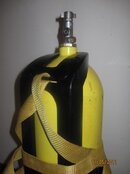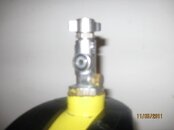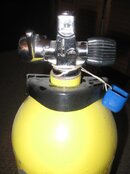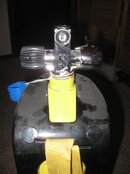BDSC
Contributor
You're cracking me up Dude!
Welcome to ScubaBoard, the world's largest scuba diving community. Registration is not required to read the forums, but we encourage you to join. Joining has its benefits and enables you to participate in the discussions.
Benefits of registering include
You're cracking me up Dude!
regardless of equipment used, poor instruction is poor instruction... That diver could be placed in a BP/W and your favorite free diving fins, and likely look just as bad..... a new diver, which you love to video to show how bad the world of diving is, isn't the best subject to support your cause.
You guys know I like to exaggerate to make a point...and that I am trying to go over the top and add some humor to this whole thing.
So if it was not obvious to you before, sorry

I found the old steel 72's to be just about perfect. They're light weight out of the water, they end up neutral when just about empty, and they give me enough bottom time that I can get in a good 45 min to hour dive in the 40' depth average with a lot of cruising around and covering a lot of ground.
I have some old regs that work perfect too, like a very small basic unbalanced SP MK2 piston reg. You don't even really need an SPG with something unbalanced, the gradual draw down of air is signal enough that you're running low.




I would like to try one out in a pool or shallow water.
I have one, you need it?That is the way I used to do it when I started. I didn't have money for a SPG so I relayed on the J valve and over a short period of time I got used to the feel of the reg as the tank was getting low. Try explaining how that worked to a diver today and most of them would have a meltdown. I still dive my steel 72 made in 1965 though I replaced the valve in the pic with a Scubapro DCAR valve that I got on line for $25. Now all I need is the pull rod.
View attachment 204014View attachment 204015View attachment 204016View attachment 204017

